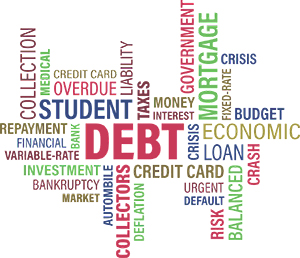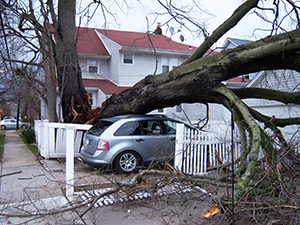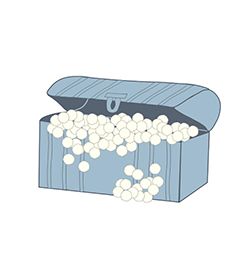Good Debt, Bad Debt
Under the right circumstances, debt can have a positive impact on your finances, but the key is to maximize good debt and minimize bad debt. The average American owed $16,720 in 2021, spread over home equity lines of credit, credit cards, and auto and student loans. With mortgage loans also factored in, weighted average debt per person came to $53,897.1
The average American owed $16,720 in 2021, spread over home equity lines of credit, credit cards, and auto and student loans. With mortgage loans also factored in, weighted average debt per person came to $53,897.1
Some debt might be considered an investment.
You spend (borrowed) money now with the expectation that it will enable you to bring in more money in the future. In the meantime, good debt can help you raise your credit score by showing lenders you have the means and the discipline to repay a loan.2⚫ Mortgage Debt – Most of us cannot afford to pay for a home with cash. Borrowing to finance a home allows you to enjoy it right away while paying for it over time. As long as the home doesn’t decrease in value, you can repay what you borrowed and perhaps even make a profit when you sell it. In the meantime, deductible mortgage interest can reduce your tax bills. Investing in residential and commercial real estate that provides rental income can also be considered good debt.3
⚫ Student Loans – Higher future earnings generally come with higher education levels. According to the U.S. Bureau of Labor Statistics, in 2020 the average weekly earnings for a person with a high school degree were $781, while those with a bachelor’s degree earned an average of $1,305 weekly and doctorate degree holders earned $1,885 on average per week.4
⚫ Business Loans – Good ideas, hard work, luck, and ambition may not be enough to support or launch a business. Seed capital and small business loans can provide the push necessary to build and sustain a profitable commercial endeavor. Borrowing money in order to grow a business is an example of using debt in a productive way.5

Bad debt finances something that diminishes in value.
Borrowing to finance consumption is generally considered bad debt, as you have spent money but received no lasting value. Another type of bad debt comes from paying too much for an item relative to its current or near-future value. If you have limited spending money, it would be more financially prudent to save up enough to pay for these items with cash, or to buy cheaper used items (with cash) instead.⚫ Car Loans – Unlike most homes, most cars will steadily depreciate over their lifetimes. On average, a new car will lose 40% of its value over the first five years, though some types of vehicles retain their value better than others.6 A car loan may or may not be considered bad debt; it depends on the amount that you end up paying for it versus the value it provides. Among other things, a car might enable you to work, so it can be an important tool in building wealth.7
⚫ Financing Furniture – Brand new furniture is generally priced at a premium and subject to rapid depreciation. Even if you are able to keep wear and tear from children and/or pets to a minimum, the resale value of your used furniture will likely be pennies on the dollar. In addition, that zero-interest financing you receive could damage your credit score, even if you pay in full by the due date and avoid paying interest.8
⚫ Credit Cards – Carrying a revolving balance on a credit card (rather than paying it off each month) can lead to paying much more than the value of your purchase. It could also create a situation in which you are only able to pay interest and cannot reduce the balance that you owe. This in turn will lower your credit score and expose you to higher interest rates on future credit. Conversely, using a credit card for purchases that are paid in full every month can improve your credit rating and can make you eligible for lower interest rates on future loans and accounts, as well as preventing you from overpaying for consumables.9
⚫ Vacations – Many Americans don’t include vacation expenses in their annual budgets, and three quarters of us have taken on debt to finance a vacation.10 Though vacations provide welcome relief from the daily grind, borrowing to finance them can increase future stress and reduce the amount you are able to put toward retirement, home ownership, and other life goals.11

Sometimes good debt can go bad.
Good debt is only good when it is used to invest in your future; it can be detrimental if used in ways that increase your overall debt or otherwise jeopardize your financial security.⚫ Holding Too Much Good Debt – Keeping your total debt -- even if it’s good debt -- in check will enable you to meet your other expenses (including unforeseen expenses) and save toward your future goals. If your debt eats up too much of your income, this will hurt your ability to weather unexpected emergencies or take advantage of unexpected opportunities. You will score the highest with lenders if your household debt is less than 35% of your income.12
⚫ Using Good Debt to Pay Off Bad Debt – It can be tempting to draw down home equity or retirement accounts to pay off a high-interest credit card balance. This may make sense in some cases as part of a structured plan to reduce your overall debt so that you can begin rebuilding wealth. However, this decision shouldn’t be made lightly, as there may be better ways you can leverage a good debt to help reduce a bad one.13
⚫ High or Variable Interest and Fees – Adjustable Rate Mortgages are one example of good debt that turns bad when the rates increase, but also watch out for low interest credit card offers with interest rates that jump after an initial period, card and loan rates that are higher than average, and cards that increase their fees and interest due to late payments. In all of these cases, the amount that you end up paying in interest, late fees, and any penalties could end up being higher than the value of the product or service you borrowed to buy.14
⚫ Borrowing That Lowers Your Credit Score – To protect your credit score, make every effort to pay at least the minimum amount due before every deadline on each of your accounts. If you end up making a late payment, it can significantly lower your credit rating, which may trigger higher interest rates on some credit cards or accounts as well as increasing the interest rate you’ll need to pay in the future.15
Citations.
1 - moneygeek.com/credit-cards/analysis/average-american-debt/
2 - debt.com/student-loan-debt/why-student-loans-are-good/
3 - experian.com/blogs/ask-experian/what-is-good-debt/
4 - bls.gov/careeroutlook/2021/data-on-display/education-pays.htm
5 - thebalancesmb.com/debt-financing-pros-and-cons-1200981
6 - iseecars.com/cars-that-hold-their-value-study
7 - fool.com/the-ascent/credit-cards/articles/good-debt-vs-bad-debt/
8 - clearpoint.org/blog/heres-why-you-probably-shouldnt-finance-furniture/
9 - bankrate.com/finance/credit-cards/how-does-credit-card-interest-work/
10 - marketwatch.com/story/75-of-americans-have-done-this-to-pay-for-a-vacation-2017-06-21
11 - forbes.com/advisor/personal-loans/vacation-loans/
12 - wellsfargo.com/goals-credit/smarter-credit/credit-101/debt-to-income-ratio/understanding-dti
13 - investopedia.com/articles/retirement/10/paying-off-debt-401k.asp
14 - finance.yahoo.com/news/dumb-credit-card-mistakes-making-204540258.html
15 - myfico.com/static/doc/education/FICO_Consumer_Credit_Activity_Infographic.pdf








